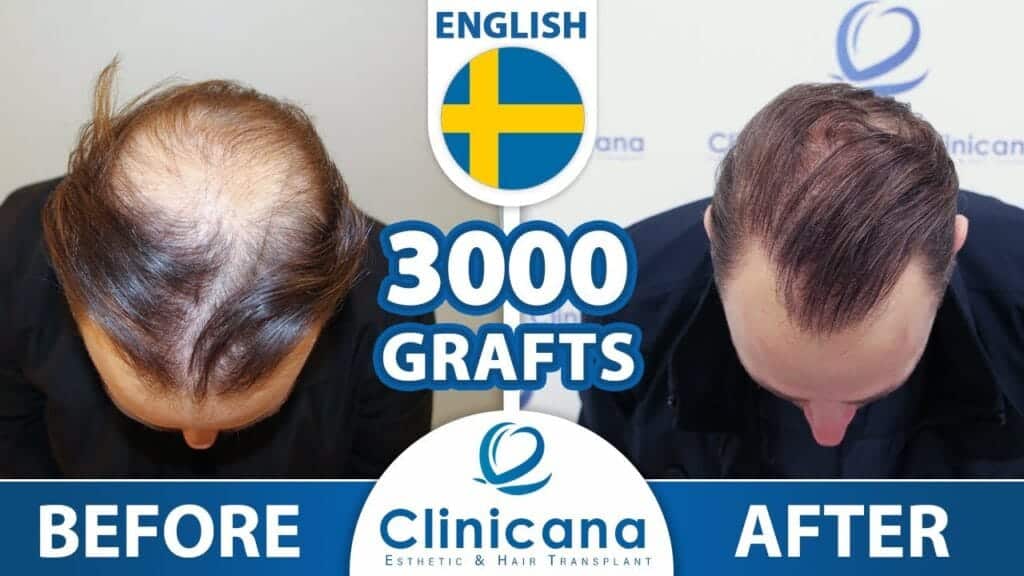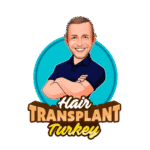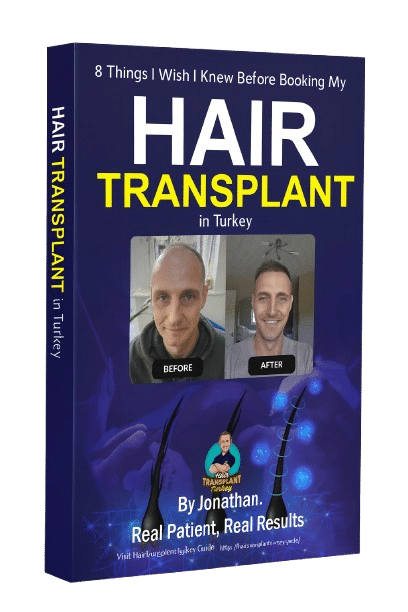Why Recovery Matters More Than You Think
When most people think about a hair transplant, they focus on the surgery itself — the number of grafts, the price, or the clinic. But in truth, recovery is what determines your real results.
The success of your hair transplant doesn’t end when you leave the operating table. According to the Mayo Clinic, 10–80% of transplanted hair grows back within three to four months — and the difference between the low and high end of that range often comes down to how well you care for your scalp in the first few days and weeks.
That’s exactly why I want to share the one thing that made my own recovery so much easier — and why I believe it played a huge part in my fantastic final result.
My Recovery Journey at Clinicana
In January 2025, I flew to Istanbul to have my FUE hair transplant with Clinicana Hair Transplant & Esthetic Surgeries, located inside Acıbadem Taksim Hospital. The process from start to finish was incredibly smooth.
From the moment I arrived, a private driver picked me up and took me to the 4-star Naz City Hotel Taksim — a clean, modern hotel included in the package. It was just a short shuttle ride from the clinic, and breakfast and dinner were included, so I didn’t need to worry about logistics at all.
On surgery day, my surgeon and the Clinicana team designed my new hairline, carefully planned the grafts, and performed the FUE procedure over about seven hours. They made sure I was comfortable and clearly explained each step.
But what really stood out came after the surgery — when recovery began. Clinicana gave me a detailed aftercare routine, medical shampoo, foam, medications, and daily instructions via WhatsApp. That support was invaluable. Yet there was one thing that made my recovery not just smooth, but 10 times easier.
The One Thing That Made All the Difference — Following My Aftercare Routine Exactly as Advised
It sounds simple, but this was my game-changer: I followed Clinicana’s aftercare routine to the letter.
I didn’t try to “improve” on it, skip steps, or rely on guesswork. I did exactly what they told me — when they told me — and the results were incredible.
Let me explain what that actually looked like in practice.
1. Washing My Hair the Right Way
Clinicana taught me how to wash my scalp gently, using the foam shampoo they provided. The technique was surprisingly specific: first apply foam, leave it for 10 minutes to soften the scabs, then rinse carefully with lukewarm water — never direct pressure.
This process helped keep my grafts clean without disturbing them. By Day 7–10, most of my scabs were gone, and I had no signs of infection or irritation.
The International Society of Hair Restoration Surgery (ISHRS) also stresses how gentle washing supports healing and oxygenation of new grafts. In my case, this step was a huge part of why my recovery felt effortless.
2. Sleeping the Smart Way
One of the simplest but most powerful habits was sleeping with my head elevated at roughly 45 degrees for the first three nights. I used two pillows and a travel neck cushion — not glamorous, but extremely effective.
This small adjustment drastically reduced swelling. By Day 3, the puffiness around my forehead was almost completely gone. The Mayo Clinic and British Association of Dermatologists both emphasise the importance of reducing post-surgical inflammation for faster wound healing — and that matched my experience perfectly.
3. Taking the Right Supplements
Clinicana offered an optional supplement plan designed to boost hair regrowth and recovery. I decided to invest in it, and honestly, it was well worth it.
The supplement included biotin, zinc, vitamin D, and saw palmetto — all scientifically linked to healthy hair growth and follicle strength. According to a PubMed study, deficiencies in these micronutrients can slow hair regrowth after surgery.
I noticed that my early growth phase (around Month 3) came quickly, and my new hairs were already thickening by Month 4. Whether that was purely genetics or the supplements helping my body heal faster, I’ll never know for sure — but the results speak for themselves.
If you’re on a budget, you can also get similar vitamins from trusted sources locally, but for me, the convenience and quality of Clinicana’s formula made it worthwhile.
Small Habits That Multiplied My Results
Beyond the big things, a few small habits made recovery even easier:
- Avoiding alcohol and smoking for the first two weeks — both slow healing and can affect blood flow to grafts.
- Wearing loose, button-up shirts to avoid accidentally brushing against the scalp.
- Drinking plenty of water and eating a high-protein diet.
- Walking a little each day to maintain circulation.
Clinicana’s support team checked in regularly via WhatsApp, which gave me peace of mind. Knowing I could message them any time removed any anxiety I had about recovery.

What I’d Do Differently (and What I’d Repeat)
If I could go back, I’d bring a neck pillow from day one — it’s a small thing, but it made sleeping easier once I started using it. I’d also start the supplements a week earlier to get nutrients into my system before surgery.
But what I’d absolutely do again is follow the aftercare routine exactly as advised. It simplified everything: I didn’t have to think or worry — I just followed the plan and trusted the process. And the payoff was seeing early, healthy growth that exceeded my expectations.
By Month 7, my new hairline looked natural and dense, and I could finally style my hair again. The results truly matched the studies showing that with proper recovery care, 85% or more of FUE grafts survive long-term (PubMed, FUE Survival Study).
Expert Perspective — Why Proper Aftercare Works
Scientifically, recovery protocols aren’t just “nice extras” — they directly affect graft survival and healing. When you keep your scalp clean, avoid trauma, and reduce inflammation, the epidermis reattaches faster and new follicles receive oxygen and nutrients sooner.
The British Association of Dermatologists and European Academy of Dermatology and Venereology (EADV) both stress that meticulous wound care can significantly reduce infection and speed epithelial closure.
In other words, the science supports the story: following your clinic’s aftercare plan can genuinely make your recovery 10 times easier and your results 10 times better.
Final Thoughts — Recovery Doesn’t Have to Be Complicated
Looking back, the one thing that made my recovery from my hair transplant so much easier was simply this: I followed the aftercare routine exactly as instructed.
It sounds almost too simple, but consistency was everything. The process was stress-free, the healing was fast, and my results have been life-changing.
If you’re preparing for your own transplant, my biggest advice is to pick a reputable clinic, trust their instructions, and don’t cut corners on aftercare.
And if you want to see exactly how my recovery looked day by day — including videos of my washing routine, healing timeline, and supplements — join my free guide and video series:
8 Things I Wish I Knew Before Booking My Hair Transplant in Turkey
References & Recommended Reading
- Mayo Clinic – Hair Transplant Overview
- ISHRS – Hair Restoration Surgery Guidelines
- PubMed – FUE Graft Survival and Patient Satisfaction Study
- British Association of Dermatologists – Postoperative Wound Care
- World Health Organization – Medical Tourism Guidance
- Clinicana Hair Transplant & Esthetic Surgeries – Official Website



 Continue with Google
Continue with Google